
Take-Aways:
The S&P 500 has made a small rebound after undercutting the June lows. With that rebound breadth, metrics improved to levels that are still not impressive for equity bulls. As we noted in these pages last week, the undercut of the June lows had breadth readings that were equally as bad as they were in June. This lack of a less intense low increases the odds that “the low” for the cycle has not been reached. A move above the 3,900-4,000 zone would negate this view.
NYSE Breadth
The NYSE Advance/Decline Line remains in a downtrend, below the 50-day moving average, after making a low for the cycle last week. There has been a small improvement this week, but there is still a lot of work to be done under the surface of the S&P 500, which is also in a downtrend below a declining 50-day moving average.
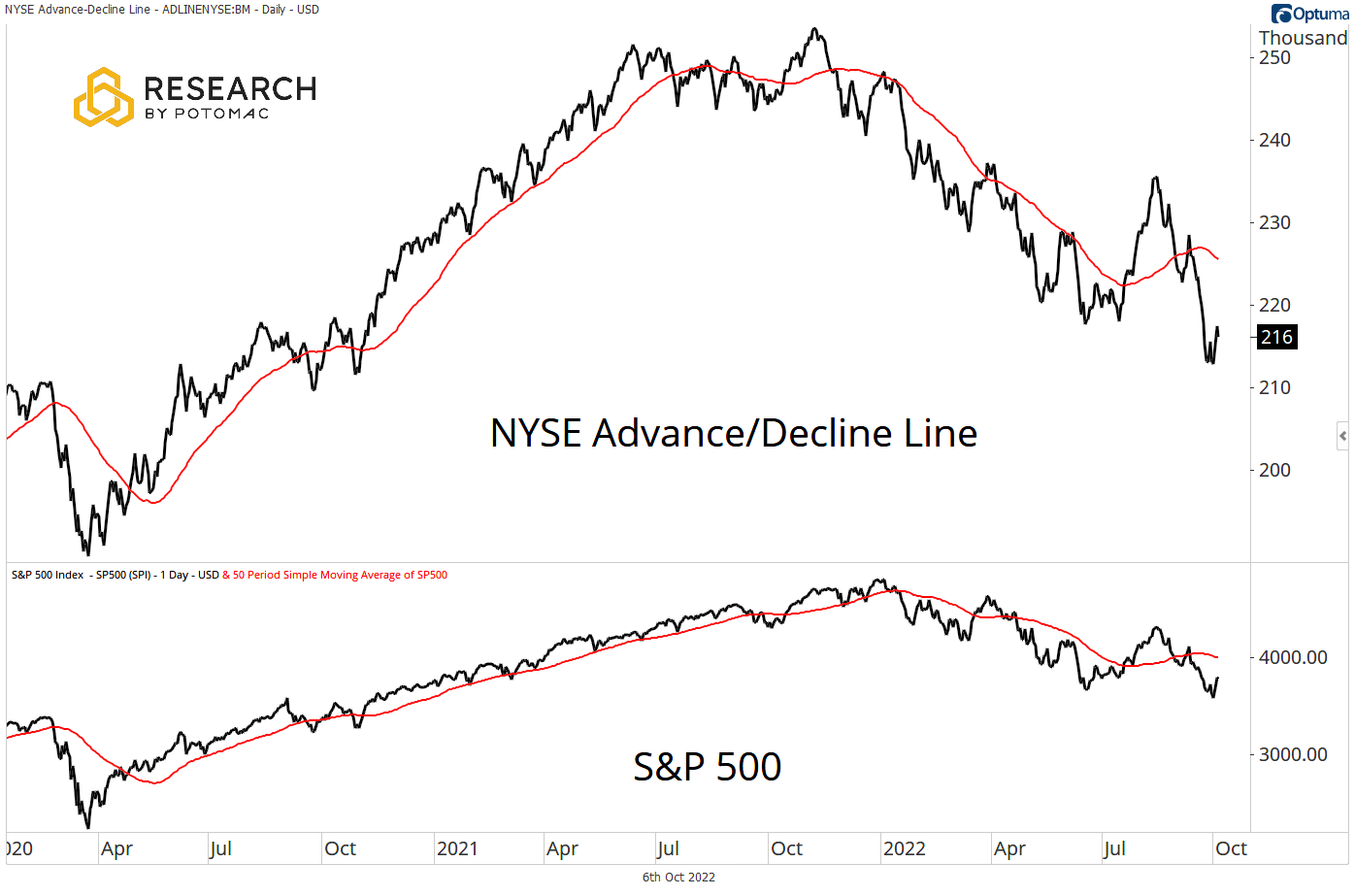
The five-day moving averages of issues on the NYSE making new 52-week and six-month lows have pulled back as equities have made a countertrend rally this week. While not a requirement for a market bottom, a less intense low would help the bull case. Last week we noted that these metrics hit the same level as were seen in June.
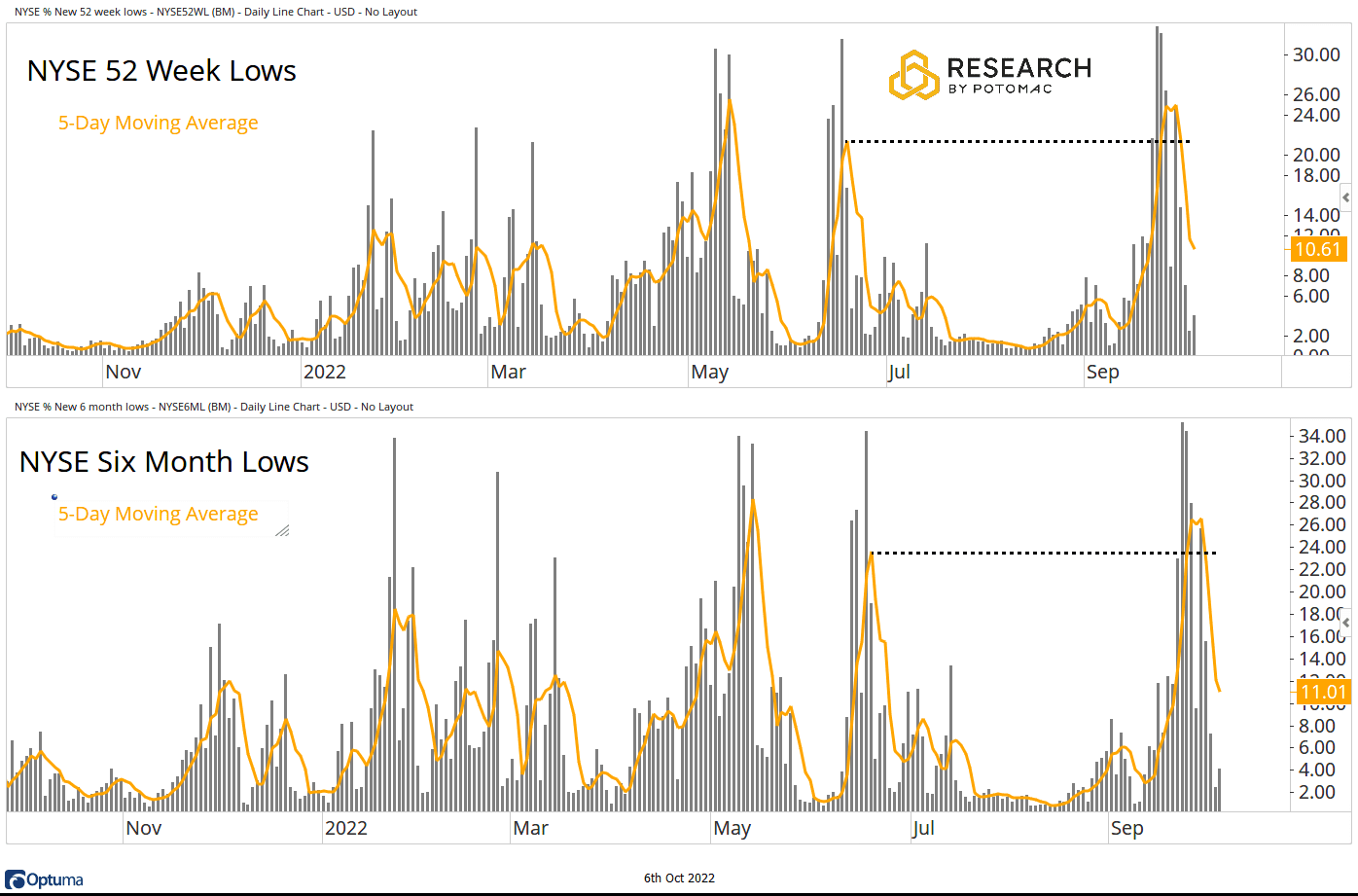
The five-day moving averages of stocks on the NYSE making new six-month and 52-week highs have moved higher this week, but metrics are less than 1%. Note that the 52-week data remains in a downtrend since peaking in November.
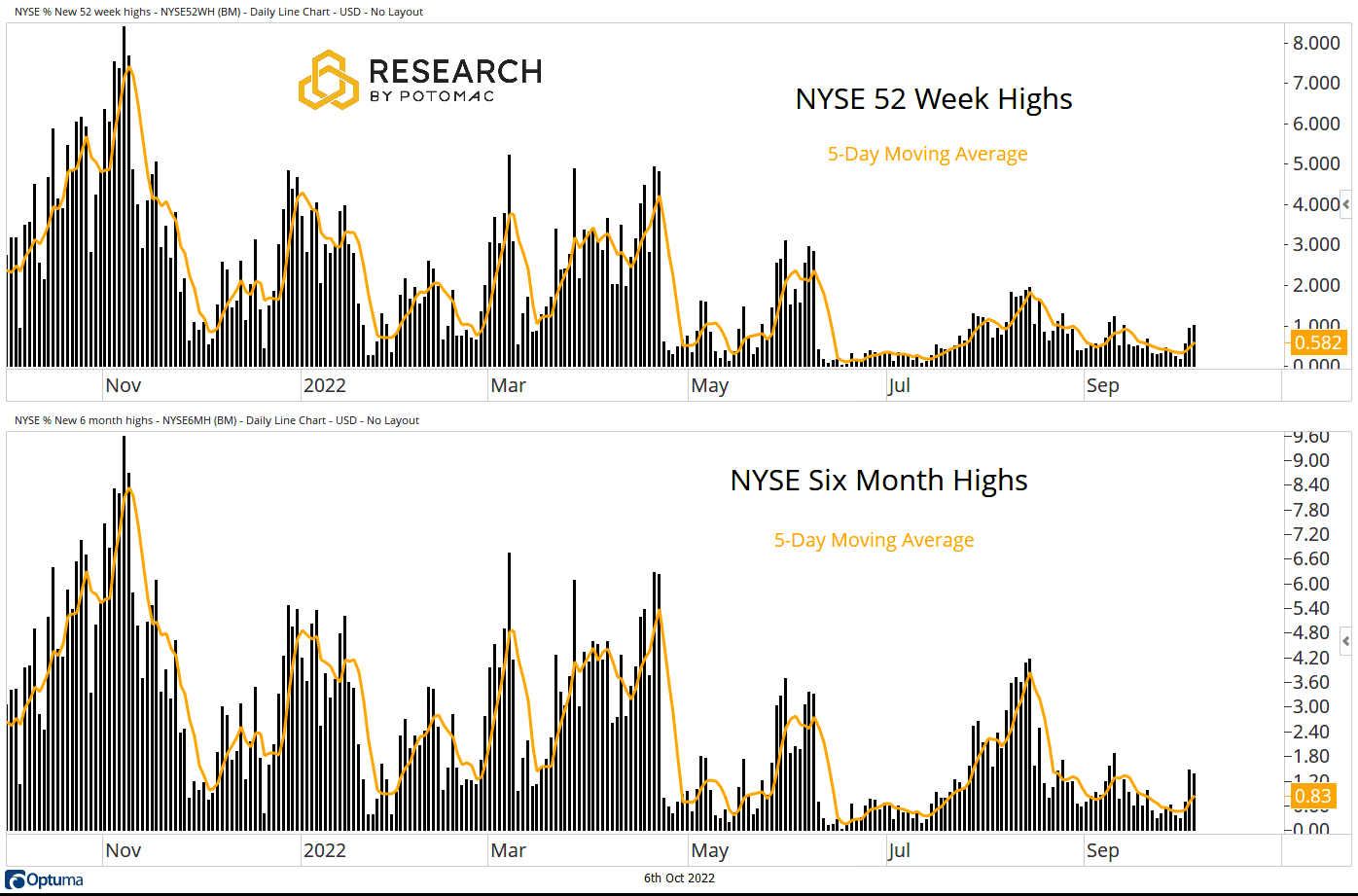
The percentage of NYSE issues trading above their respective 200-day moving averages moved to 17% this week from 13% but remained in a downtrend. The S&P 500 remains below its 200-day moving average. The bears are still in control of the long-term trend as the index tries to hold support at the June lows.
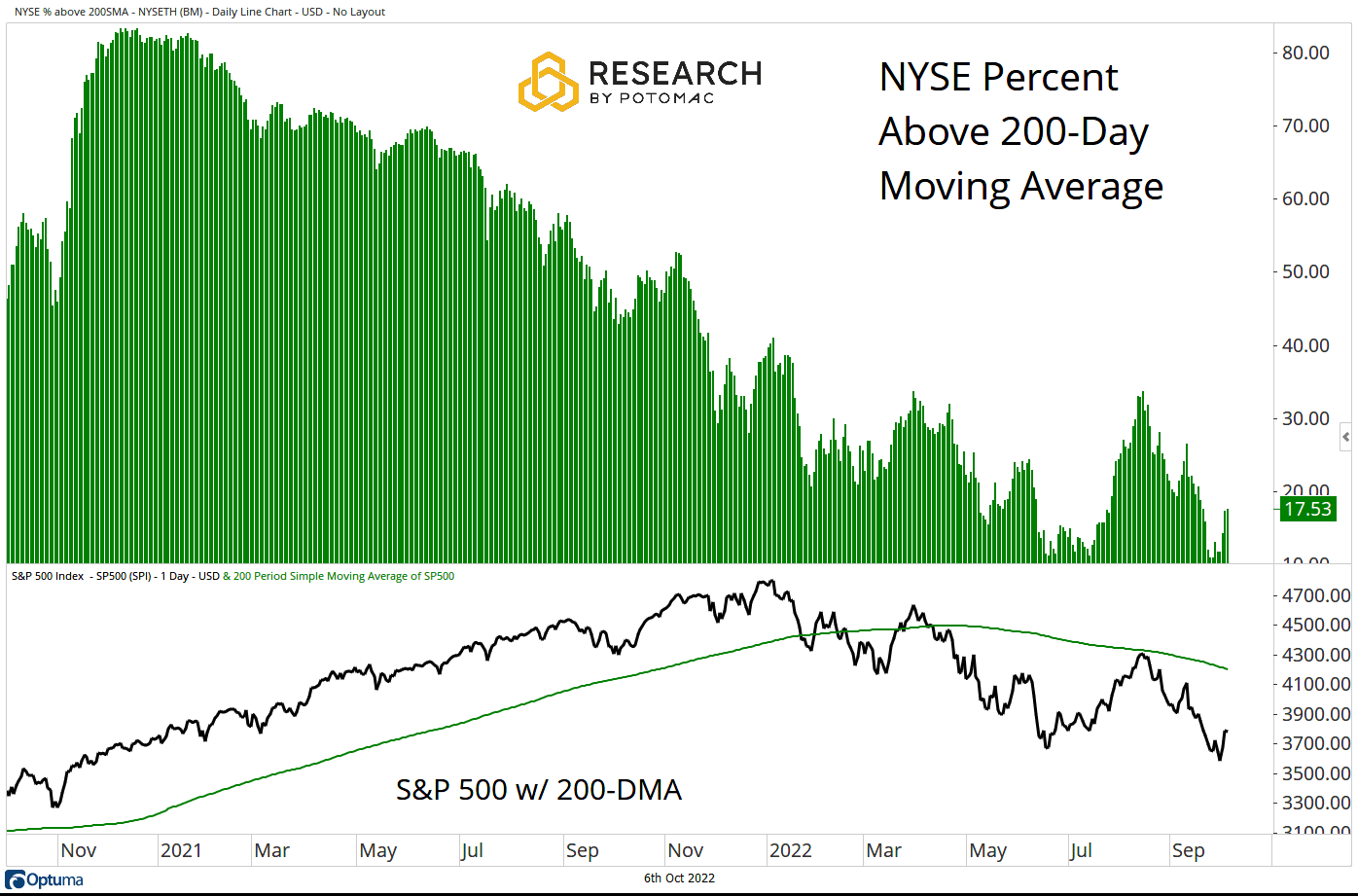
The percentage of NYSE issues trading above their respective 50-day moving averages moved to 21% from 13% last week. The S&P 500 is below its 50-day moving average.
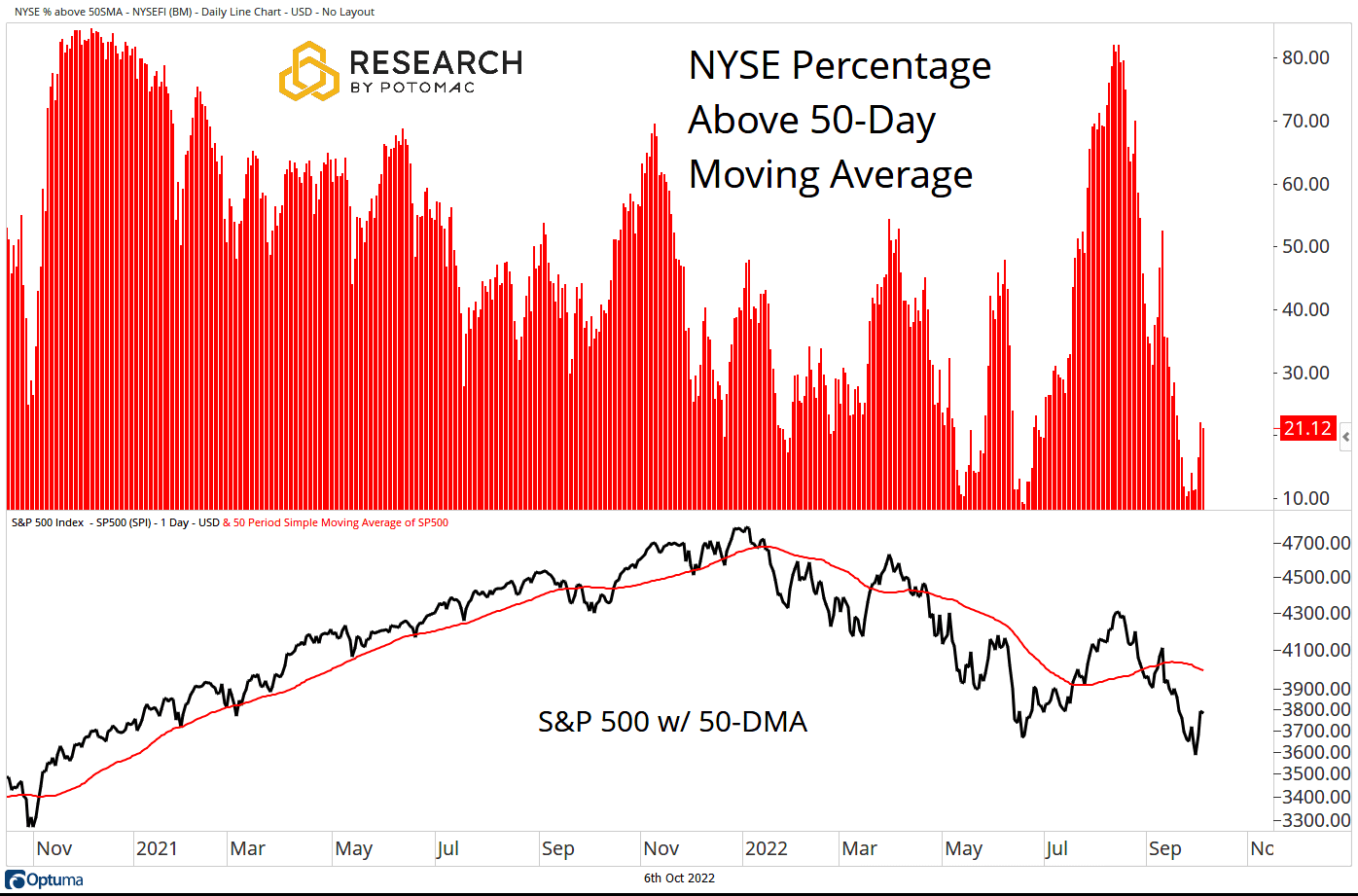
The percentage of issues on the NYSE trading above their respective 20-day moving averages stands at 36%, up from 14% last week. The index remains below its declining 20-day moving average.
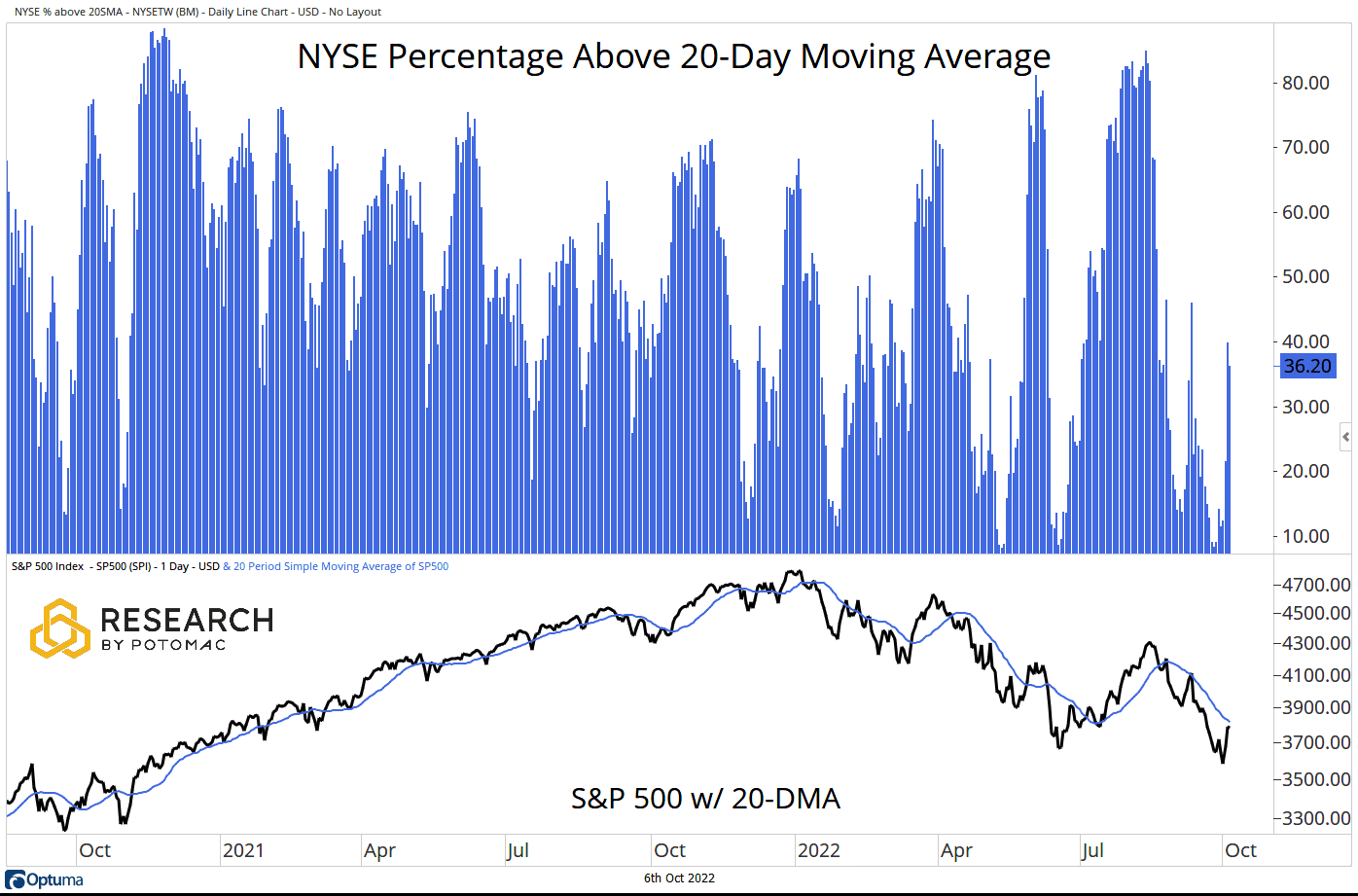
S&P 500 Breadth
Breadth metrics for the S&P 500 were mostly stronger on the week.
- Advance/Decline Line: Below the 50-day moving average.
- Percent Above Their 200-Day Moving Average: 20% from 14% last week.
- Percent Above Their 50-Day Moving Average: 21% from 6% last week.
- Percent Above Their 20-Day Moving Average: 45% from 8% last week.
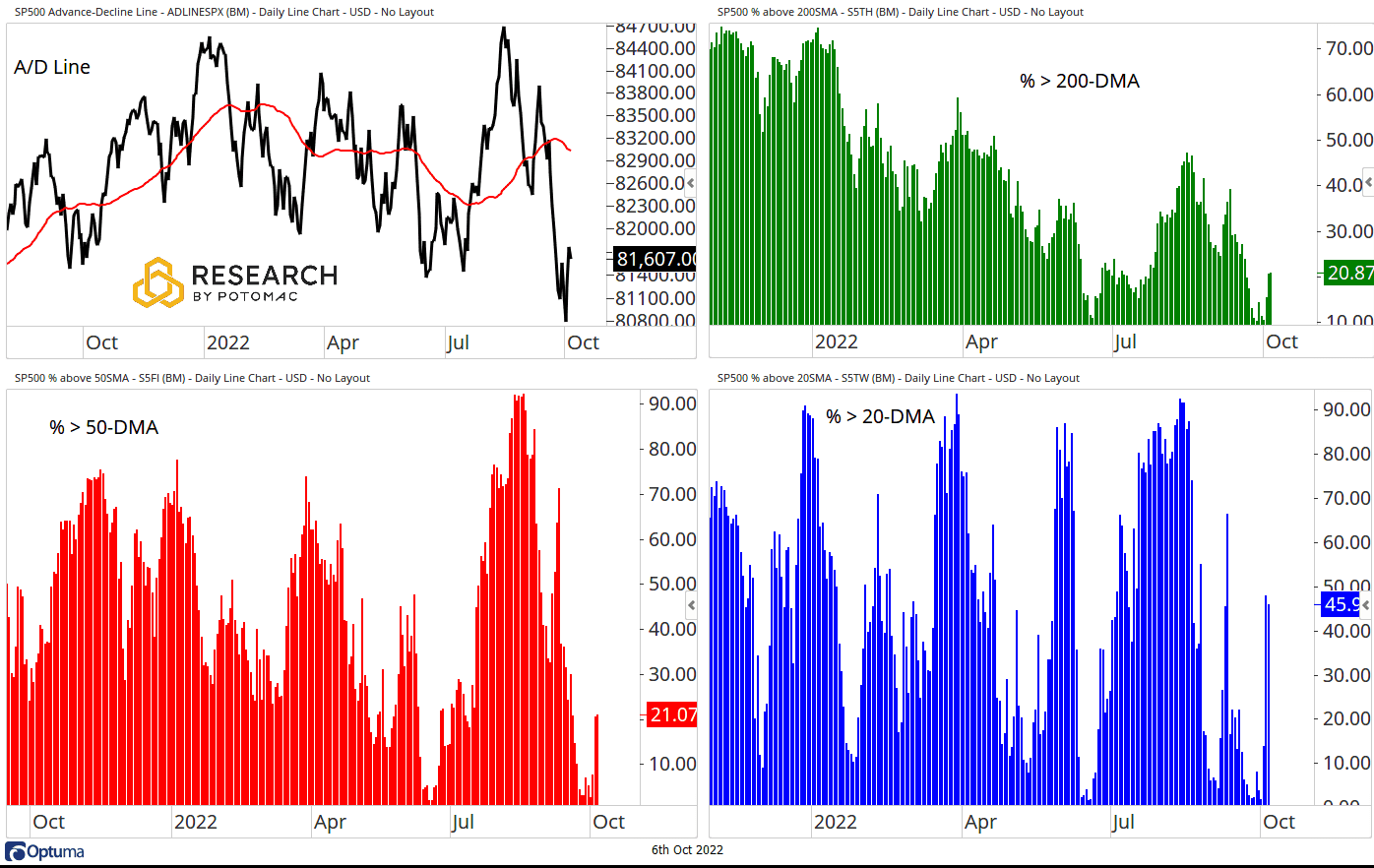
Small Cap Breadth
Breadth metrics for the S&P 600 Small Cap Index were stronger this week.
- Advance/Decline Line: Below the 50-day moving average.
- Percent Above Their 200-Day Moving Average: 23% from 15% last week.
- Percent Above Their 50-Day Moving Average: 17% from 8% last week.
- Percent Above Their 20-Day Moving Average: 48% from 12% last week.
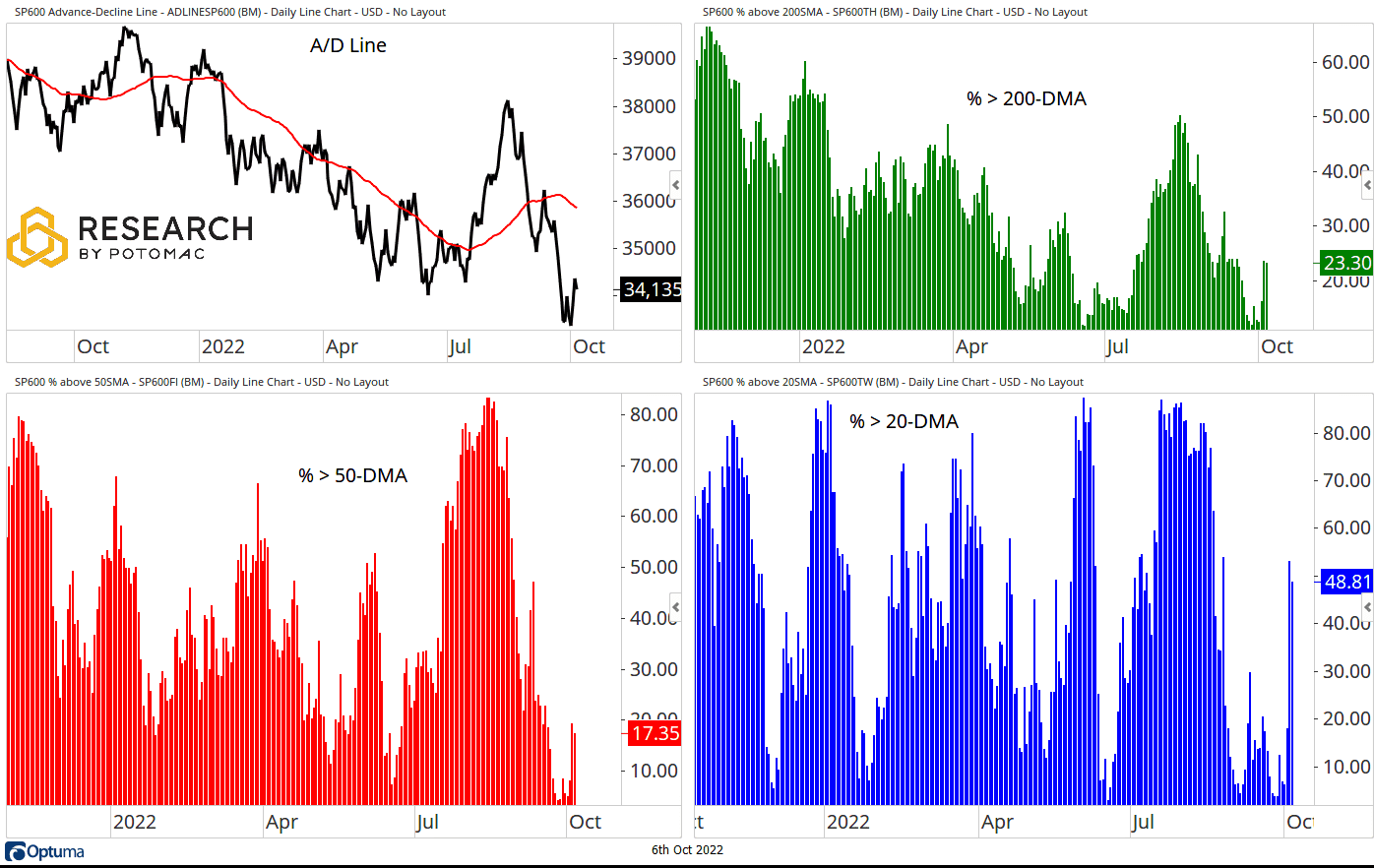
NASDAQ 100 Breadth
Breadth metrics for the NASDAQ 100 were stronger this week.
- Advance/Decline Line: Below the 50-day moving average, made a new cycle low on Friday.
- Percent Above Their 200-Day Moving Average: 15% from 9% last week.
- Percent Above Their 50-Day Moving Average: 19% from 9% last week.
- Percent Above Their 20-Day Moving Average: 53% from 7% last week.
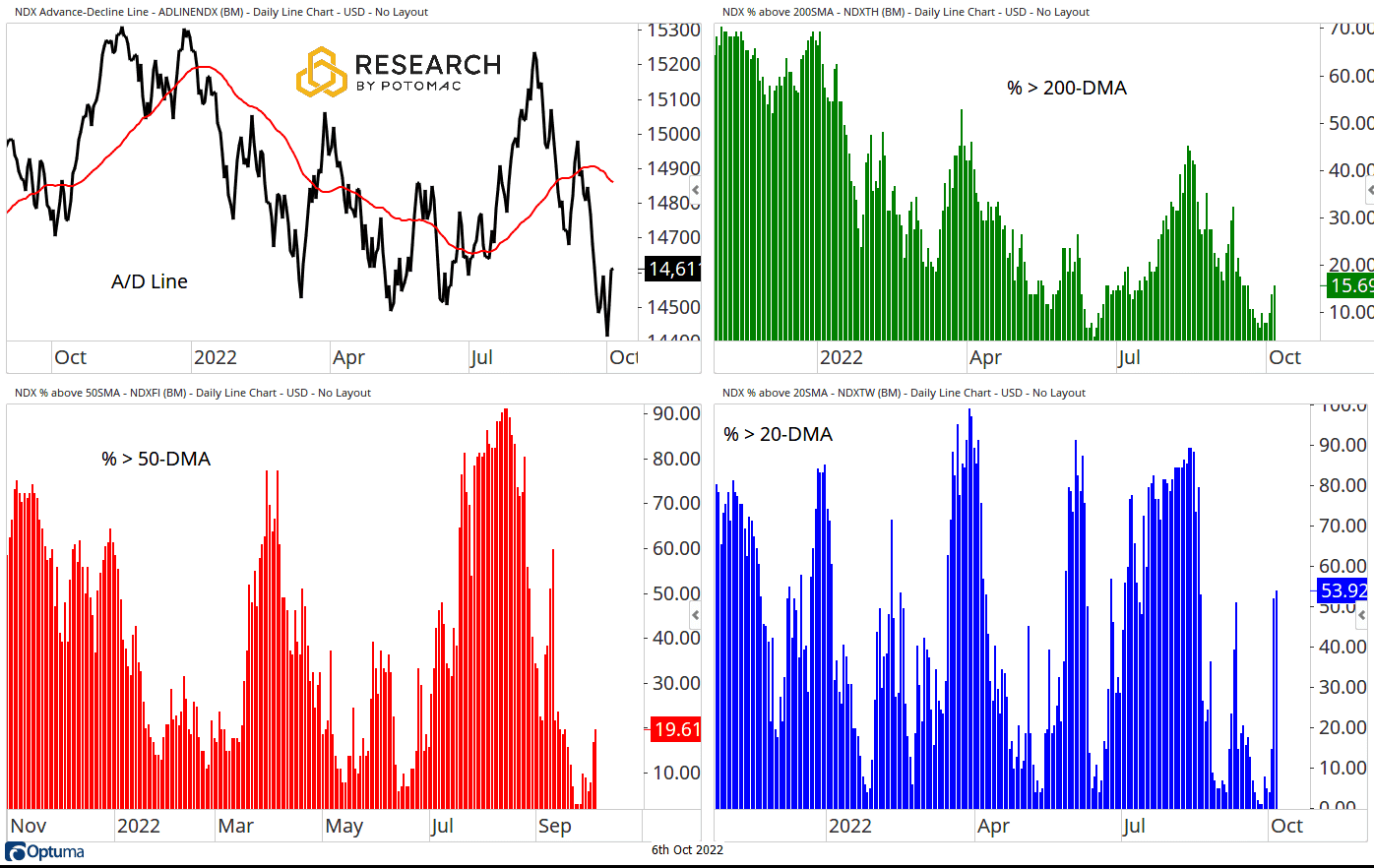
Potomac Fund Management ("Company") is an SEC-registered investment adviser. SEC registration does not constitute an endorsement of the advisory firm by the SEC nor does it indicate that the advisory firm has attained a particular level of skill or ability. This information is prepared for general information only and should not be considered as individual investment advice nor as a solicitation to buy or offer to sell any securities. This material does not constitute any representation as to the suitability or appropriateness of any investment advisory program or security. Please visit our FULL DISCLOSURE page. The company does not make any representations or warranties as to the accuracy, timeliness, suitability, completeness, or relevance of any information prepared by any unaffiliated third party, whether linked to the Company website or incorporated herein, and takes no responsibility for any of this information. The views of the Company are subject to change and the Company is under no obligation to notify you of any changes. Different types of investments involve varying degrees of risk, and there can be no assurance that the future performance of any specific investment or investment strategy will be profitable or equal to any historical performance level.
